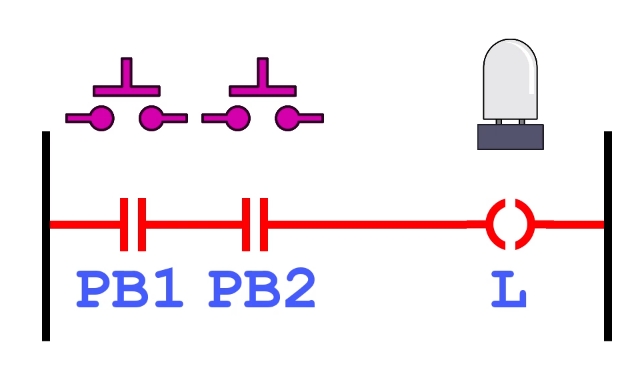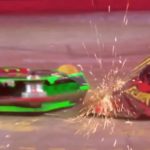Before we dive into our list of PLC programming languages, let’s first define PLC programming. PLC stands for Programmable Logic Controller and works as a special computer programmed for specific operations in industries like automotive, petroleum, or steel. Nowadays, companies use PLC in many machines in different industries.
Let’s take a look at the most popular languages used in PLC programming:

Table of Contents
Ladder Diagram (LD)
Ladder Diagram or also known as Ladder Logic is the first-ever PLC language and also the most popular one. It doesn’t necessarily look like a ladder, but it is named that way because of the appearance of the control logic that illustrates how relays were wired together.
The Ladder Diagram consists of lines, each line representing a circuit, and graphical elements such as contacts, coils, and relays. The rung of the Ladder Diagram is used to represent the relationship between the circuit’s logic, which makes the Ladder Diagram easier to understand and design. By using relays and contact symbols, we can clearly state the logic of the circuit and then transfer it to the physical components.
Ladder Diagram is renowned for its ability to intuitively and easily program PLCs. This is because the graphical elements and lines of the Ladder Diagram allow you to see the whole picture of the program, making it much easier to recognize the logic of the circuit.
Function Block Diagram (FBD)
Function Block Diagram is the next most popular graphical programming. It is similar to LD but it uses boxes. These boxes are connected to each other and are used to make a system. If your program needs motion control, FBD is your safest bet.
In FBD, a rectangular box is used to represent a function. Inside the box, instructions are written to allow the program to perform the chosen task. The instructions inside a box can be as simple as adding two numbers or as complex as performing a motion control operation. When two boxes are connected, they can be used to create a program flow and make operations that are more complex than a single function. The number of boxes used can be increased as more numerical calculations are needed in the program.
FBD programming is great for making repetitive processes that require the same actions to be taken multiple times. This type of programming is also well suited for motion control and data logging operations because each box is designed with a specific operation that can be combined with other boxes to form a more complex operation. To use FBD effectively, some knowledge of the architecture of the motion control operation is required as the complex workings of the entire system must be well understood before programming can begin.
Sequential Function Charts (SFC)
SFC resembles a flowchart where it uses steps and transitions to achieve your output. You can use it for debugging because you can easily see what’s wrong. You can also use this for breaking down repetitive steps.
Sequential Function Charts are also helpful for creating a visual representation of your program. This can help you to understand the logic of the program and make sure that it is running correctly. It can also help you to debug your program and make sure that it is running as expected. Overall, Sequential Function Charts can help you to create a visual representation of your program and make sure that it is running as expected.
Structured Text (ST)
Structured Text (ST) is an executable programming language that is based on a text-like structure. It is very similar to other popular programming languages, such as Basic, Pascal, and C, in both its syntax and its ability to perform complex operations. It also has some additional features that are not present in the aforementioned languages but can be challenging to learn due to its more intricate syntax.
Structured Text is a great language for creating programs that can control PLCs. It is very powerful and can be used to create complex programs that can control a variety of different types of machinery. It is also very easy to read and understand, which makes it a great choice for programming PLCs. Structured Text is a great language for those who are looking to create complex programs that can control a variety of different types of machinery.
Instruction List (IL)
Instruction List (IL) is a type of programming language using mnemonics, such as LD, OR, ACC, and others, to create instruction sequences on each line. Like an assembly language, IL is text-based and errors can be difficult to troubleshoot. It is used in Programmable Logic Controllers to program instructions for execution within the controller.
IL is used to control the sequence of operations for automated machinery and processes, such as those found in manufacturing, robotics, and other industrial applications. IL is used to control the flow of data within a system and can be used to control the flow of input to and output from a system. IL is an important tool for creating efficient and reliable automated systems.





